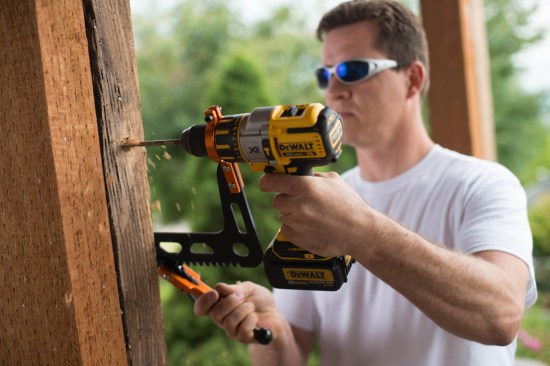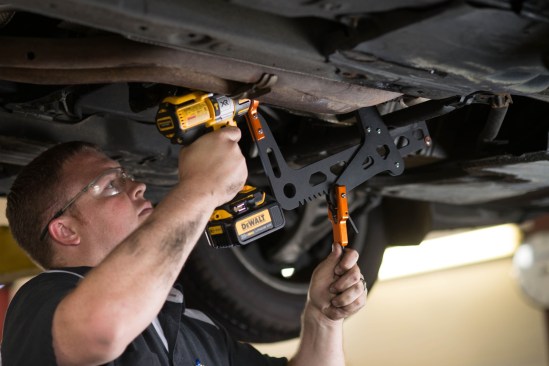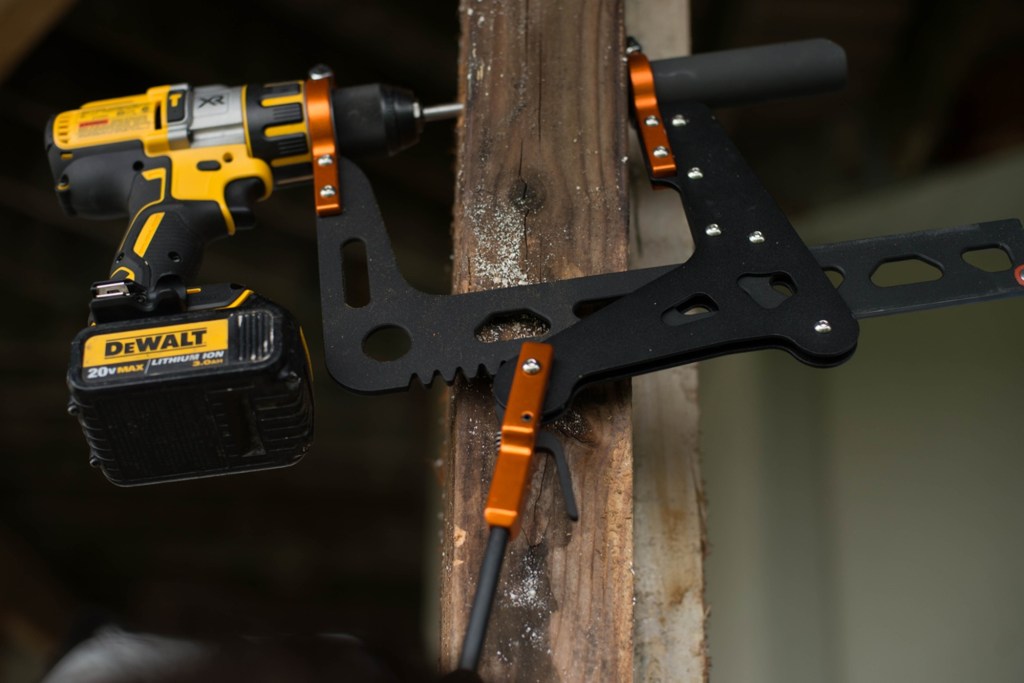If I never stand with my forearms in a knot with the battery of my cordless braced against my shin to drill through a piece of steel again, I won’t be sorry.
Trying to keep the rpm down, pressure on the bit—but not too much pressure on the bit—and maybe add a few drops of oil here and there. It’s a third-hand kind of job.
The Rapidrill Slim (there are two and we wrote about the more commercially suited, $800 model here) is, as the name implies, a scaled-down version of the same tool. Less robust and less costly at $300, the lever-bracket-drill-holder looks like something that would pay for itself if it got used even only a few times a year on bigger drilling projects. One hole, no. Twenty-five, yes.

The tool secures your drill in its armature, then C-Clamps itself to the work.
The tool secures your drill in its armature, then sort of C-Clamps itself to the work. Between the geared lever—that’s where the pressure and rate of cut is controlled—and your one hand triggering the drill, an unruly, tedious job is pulled under control.
You can drill square and round tube, solid stock, wood, and more with Rapidrill Slim. Also, Rapidrill says the compactness and design of the mechanical connection to the work enable it to get in some locations other drill accessories in the category can’t go.

Shown here in an automotive use, it illustrates how the Rapidrill can access tight spots and work on variously shaped materials.
Trade Trick? Does everybody know this? My electrician told me one way to make drilling larger holes in steel easier is to predrill a 1/8-inch hole first with a really hard bit, then follow up with the larger size you ultimately need.
This article originally appeared in Tools of the Trade.
